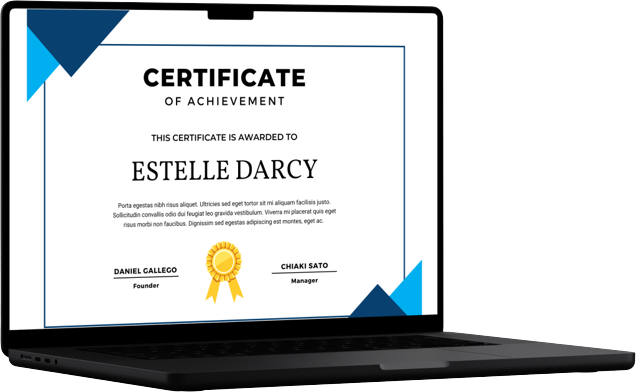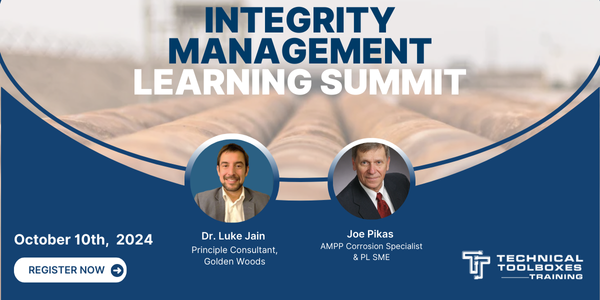September 26, 2024: External Corrosion Direct Assessment (ECDA)
-
Author: Joe Pikas
-
Level: Advanced
-
Study time: 8 hours
Write your awesome label here.
Course overview
What is external corrosion direct assessment? What type of direct assessment is used to confirm the acceptable integrity of a pipeline?
External Corrosion Direct Assessment (ECDA) is an industry-accepted practice for the determination of the integrity of pipelines. This one-day training will present the four-step ECDA process for ascertaining the integrity of pipelines. This webinar covers ECDA, Asset Integrity Management, Where to Dig, and concludes with Determining Areas of Concern.
START TIME: 8:00 A.M.
END TIME: 4:00 P.M.
External Corrosion Direct Assessment (ECDA) is an industry-accepted practice for the determination of the integrity of pipelines. This one-day training will present the four-step ECDA process for ascertaining the integrity of pipelines. This webinar covers ECDA, Asset Integrity Management, Where to Dig, and concludes with Determining Areas of Concern.
START TIME: 8:00 A.M.
END TIME: 4:00 P.M.
PDH Certificate included upon successful completion

Joe Pikas
AMPP Corrosion Specialist & PL SME
ABOUT Joe
Joe Pikas is a subject matter expert for Technical Toolboxes with more than 50 years of experience in pipeline construction, operations, corrosion control design, and implementation, including pipeline engineering management. He is an expert in pipeline integrity management, risk management, coating materials selection, cathodic protection design, and testing, and internal and external pipeline corrosion control. In 2009, he was awarded the NACE Distinguished Service Award and received an industry award in 2002 from AGA, GTI, INGAA, NACE, OPS, and PRCI International. Also, he has contributed over 50 papers to industry trade magazines, NACE, SSPC, and other publications and conferences.

